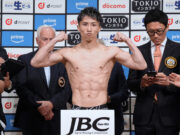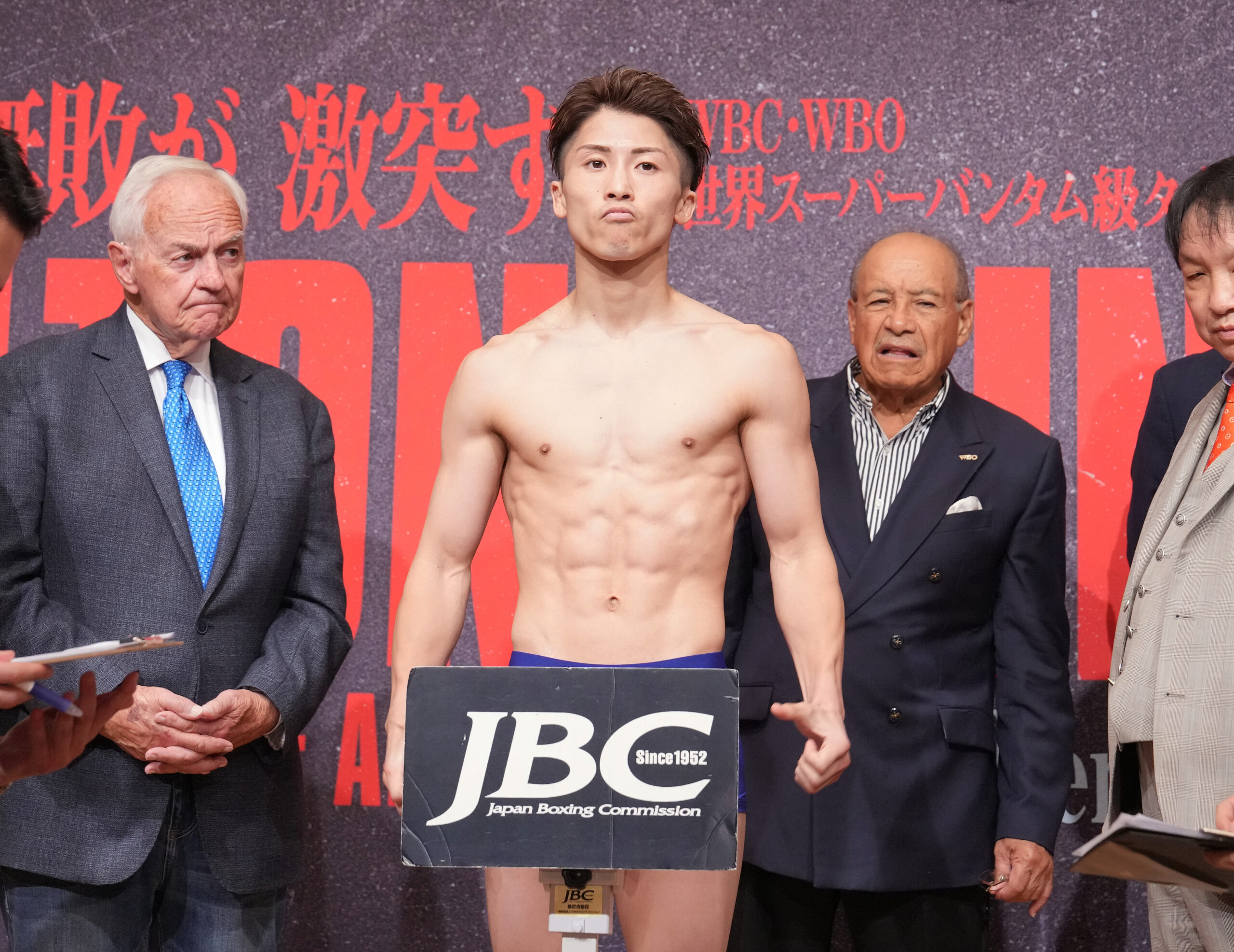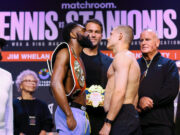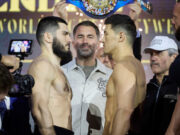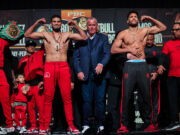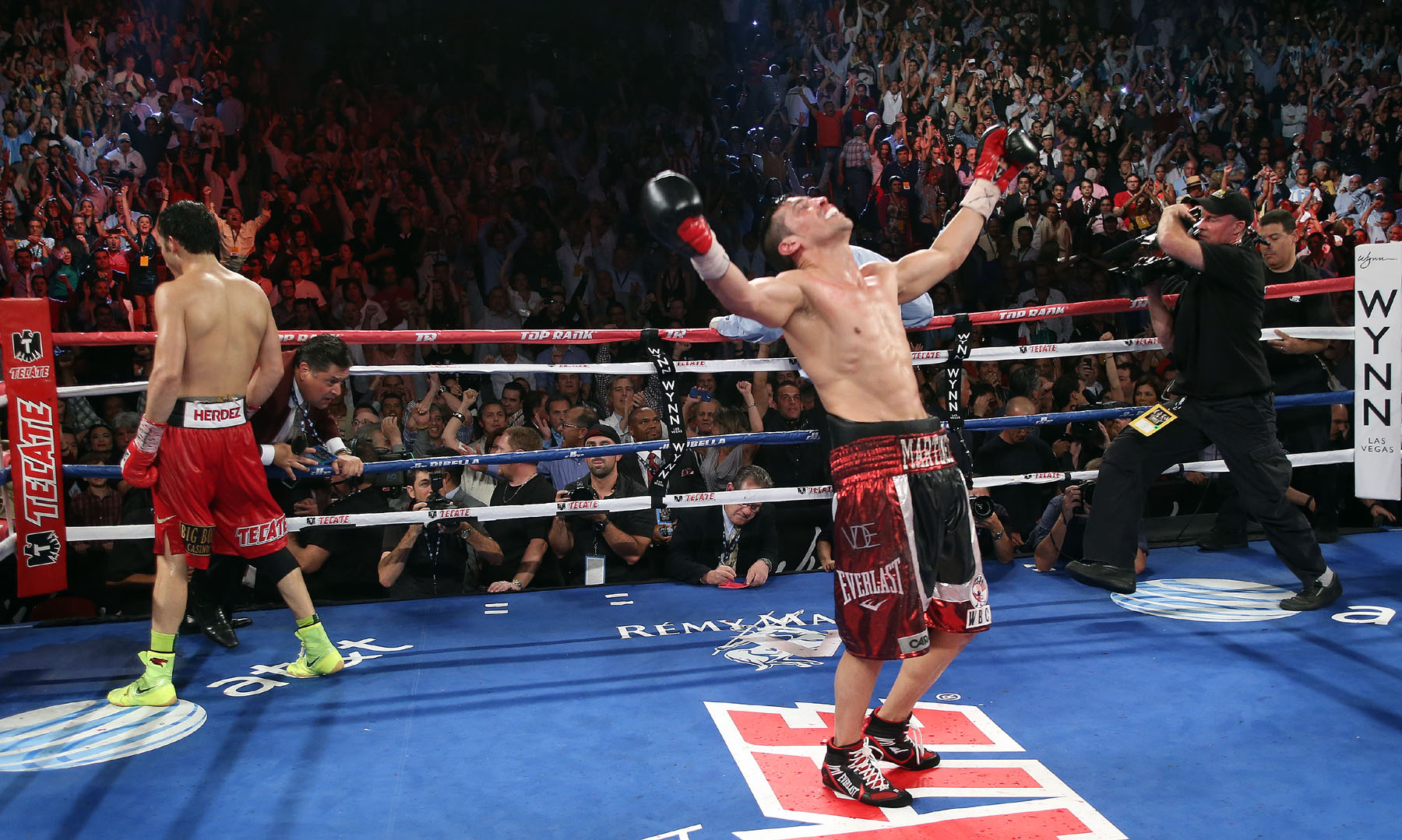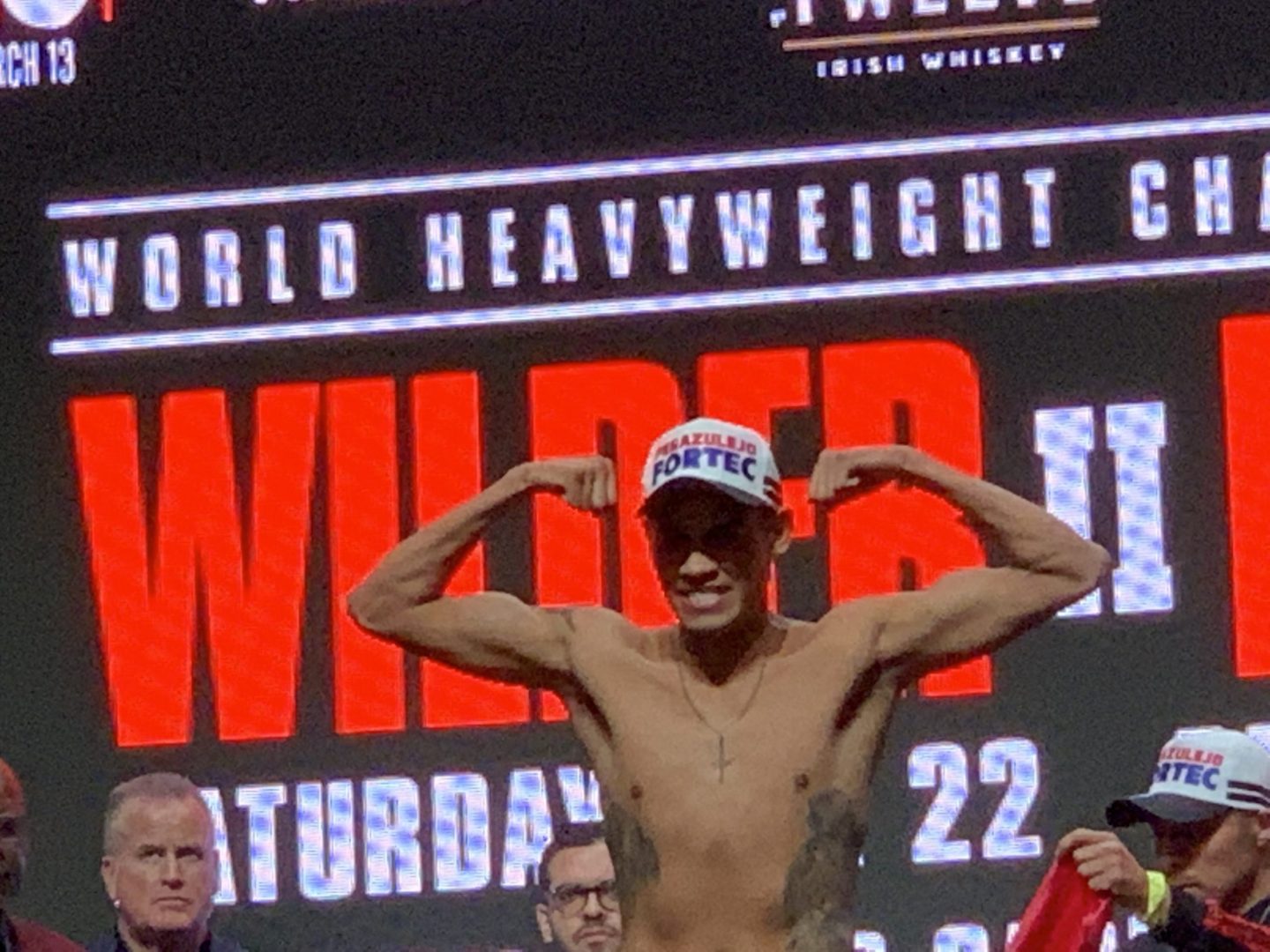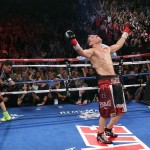
“The passion caused by the great and sublime in nature, when those causes operate most powerfully, is Astonishment; and astonishment is that state of the soul, in which all its motions are suspended, with some degree of horror.” – Edmund Burke, “A Philosophical Enquiry into the Origin of Our Ideas of the Sublime and Beautiful, Part Two,” 1757
It is the horror that concerns me. Horror, after all, is what the 18th-century Irishman uniquely identified – an ingredient of astonishment that might otherwise escape us. Horror is what I unknowingly wished to get at the morning after Argentine Sergio Martinez nearly succumbed to his 12th-round sacking by Mexican Julio Cesar Chavez Jr., Sept. 15 at University of Nevada, Las Vegas’ Thomas & Mack Center: “a burst of something so chemically pure the body hates it, an intensity unendurable for more than a few seconds.”
That was the sensation I experienced in the final 90 seconds, or at least the moment of those seconds that started when Martinez, the world’s middleweight champion, collapsed between the ropes, straightened himself, then got pounded rightwards to the mat. There was a sensation of horror, a sensation that something torturous was afoot, and that its consequences would resonate. Without a rooting interest per se (it was my seventh Chavez fight, having first interviewed him in the concourse of America West Arena seven years before; it was my first Martinez fight, having first enjoyed a conversation with him in July, one that treated, in part, Martinez’s delight with John Kennedy Toole’s novel “A Confederacy of Dunces” and its relish of absurdity), I was decidedly more horrified by Chavez’s felling Martinez midway through their final round than any of the 300 flush blows with which Martinez’s black leather striped Chavez’s face and body.
Chavez was not the match’s thinker, not by any stretch, and perhaps that’s why. Throughout, Chavez concerned himself only with striking or blocking while trusting pedigree to guide him through a geometry of the ring others need years to master but Chavez absorbed as a boy spying on his dominant father; Chavez was not setting traps, disproving theories or making inquiries of any Martinez attribute save weakness. Martinez, meanwhile, analyzed every set of Chavez stimuli at every moment, checking it against its immediate predecessor and its forming template, a means of combat more enervating for a person of Chavez’s temperament than even the Argentine’s relentlessly pumping legs and bobbing, uncovered chin would be for someone of Chavez’s flaccid conditioning.
There were several things that happened in round 10, the gravity of whose consequences went at first unnoticed: An accidental banging of heads to which Chavez reacted theatrically and Martinez more subtlety, and when Chavez pushed the back of Martinez’s neck till he dropped him on all fours. I recorded both in my notes but didn’t assign either sufficient import. The headbutt opened a gash inside Martinez’s scalp line, and if it did that, it dazed him, too, setting his magnificent brain misfiring. But the way Martinez had to lift himself from the mat was more significant still: It revealed his fatigue.
There is something naturally stressful about being chased by a larger man, especially one intellectually incapable of dissuasion or discouragement, but each movement Martinez’s legs made till that instant they’d made through training camp, and their fatigue was a slow-mounting thing. Rising from his knees, though, put Martinez’s legs in a unique enough position to shock him with how much strength had fled, and his jaw dropped in a large O that remained through the explosive finish.
“But pain is always inflicted by a power in some way superior, because we never submit to pain willingly. So that strength, violence, pain, and terror, are ideas that rush in upon the mind together.”
Here again Burke instructs us. However devastating Martinez’s blows to Chavez’s head were, no matter their longterm consequences, Chavez’s punches were more dramatic to behold, because they more evidently pained the smaller man, causing a submission Martinez did not expect, did not in any conscious way allow for – more macho than his rivals know – but, in empathy, must have imagined. There was an imposition of will in the final round, when Chavez succeeded, mostly, in brutalizing a man 15 or so pounds smaller, and it followed the moment Martinez came off his stool in misplaced triumph, gloves raised as if the ordeal were over, and Chavez lumbered off his stool like a man not even keeping a tally of lashes, rounds or punches – a tormentor in his own timezone, one devoid of urgency, a man who a round earlier had to silence his ferocious father’s barking from behind by saying over his left shoulder, “ya, ya, ya (enough, enough, enough).” For paternal prodding and its impatience with spectacle, actually, were all that agitated Chavez the whole evening.
“Beauty in distress is much the most affecting beauty.”
In Part Three of his classical treatment of aesthetics, Burke explored the linguistic ploy every culture uses of making the beautiful diminutive and the ugly large. Chavez, in the moment of the 12th round he spun Martinez for a second time to his knees and elbows on the mat, remains ogre-like in my mind, careless, insatiable, enormous, ugly. Martinez, I see, reduced to tininess, preciousness – enfeebled and distressed. He would swell to normal size a half minute later, with the paddled apron’s signal of 10 seconds, but those moments of Martinez’s diminishment and fragility hold within them, for me, the door to another chamber of prizefighting’s palatial appeal.
Bart Barry can be reached at bart.barrys.email (at) gmail.com



